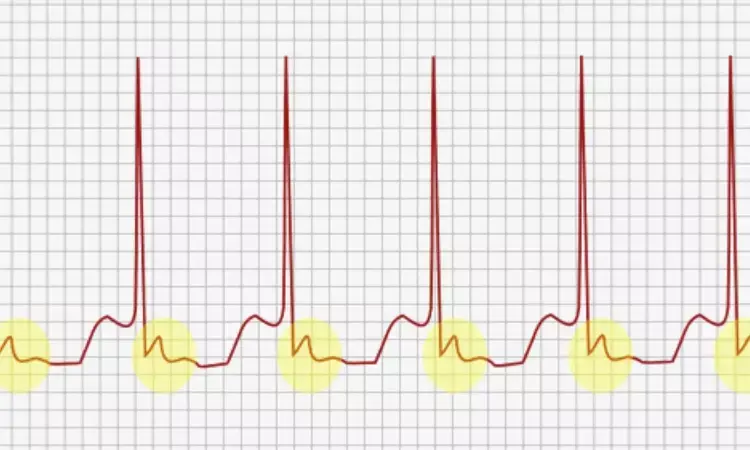- Home
- Medical news & Guidelines
- Anesthesiology
- Cardiology and CTVS
- Critical Care
- Dentistry
- Dermatology
- Diabetes and Endocrinology
- ENT
- Gastroenterology
- Medicine
- Nephrology
- Neurology
- Obstretics-Gynaecology
- Oncology
- Ophthalmology
- Orthopaedics
- Pediatrics-Neonatology
- Psychiatry
- Pulmonology
- Radiology
- Surgery
- Urology
- Laboratory Medicine
- Diet
- Nursing
- Paramedical
- Physiotherapy
- Health news
- Fact Check
- Bone Health Fact Check
- Brain Health Fact Check
- Cancer Related Fact Check
- Child Care Fact Check
- Dental and oral health fact check
- Diabetes and metabolic health fact check
- Diet and Nutrition Fact Check
- Eye and ENT Care Fact Check
- Fitness fact check
- Gut health fact check
- Heart health fact check
- Kidney health fact check
- Medical education fact check
- Men's health fact check
- Respiratory fact check
- Skin and hair care fact check
- Vaccine and Immunization fact check
- Women's health fact check
- AYUSH
- State News
- Andaman and Nicobar Islands
- Andhra Pradesh
- Arunachal Pradesh
- Assam
- Bihar
- Chandigarh
- Chattisgarh
- Dadra and Nagar Haveli
- Daman and Diu
- Delhi
- Goa
- Gujarat
- Haryana
- Himachal Pradesh
- Jammu & Kashmir
- Jharkhand
- Karnataka
- Kerala
- Ladakh
- Lakshadweep
- Madhya Pradesh
- Maharashtra
- Manipur
- Meghalaya
- Mizoram
- Nagaland
- Odisha
- Puducherry
- Punjab
- Rajasthan
- Sikkim
- Tamil Nadu
- Telangana
- Tripura
- Uttar Pradesh
- Uttrakhand
- West Bengal
- Medical Education
- Industry
Ranolazine reduced ventricular tachyarrhythmia burden among cardiac resynchronization therapy patients: RAID Trial

USA: Ranolazine is effective in reducing ventricular tachyarrhythmia (VTA) burden among high-risk patients without the concomitant use of antiarrhythmic drugs (AADs), without atrial fibrillation, and/or with cardiac resynchronization therapy-defibrillator (CRT-D) -- shows a recent study. Ranolazine addition however did not affect vta burden in patients already on AADs or those with AF. The study appears in JACC: Clinical Electrophysiology.
Ranolazine treatment was shown to be associated with the reduction in recurrent ventricular tachycardia requiring suitable implantable cardioverter-defibrillator (ICD) therapy. Arwa Younis, Heart, Vascular and Thoracic Institute, Cleveland Clinic, Cleveland, Ohio, USA, and colleagues aimed to identify groups of patients in whom ranolazine treatment would result in the highest reduction of VTA burden.
For this purpose, the researchers performed Andersen-Gill analyses to identify variables associated with the risk of VTA burden among 1,012 patients enrolled in RAID. VTA burden defined as VTA episodes requiring appropriate treatment was the primary endpoint.
The researchers reported the following findings:
- Multivariate analysis identified 7 factors associated with increased VTA burden: history of VTA, age ≥65 years, New York Heart Association functional class ≥III, QRS complex (≥130 ms), low ejection fraction (<30%), atrial fibrillation (AF), and concomitant antiarrhythmic drug (AAD) therapy.
- The effect of ranolazine on VTA burden was seen among patients without concomitant AAD therapy (HR [HR]: 0.68), whereas no effect was seen among those who are concomitantly treated with other AADs (HR: 1.33).
- In patients with cardiac resynchronization therapy (CRT) ICDs, ranolazine treatment was associated with a 36% risk reduction for VTA recurrence (HR: 0.64), whereas among patients with ICDs without CRT no significant effect was noted (HR: 0.94).
Among high-risk HF patients implanted with defibrillators, predictors of increased ventricular tachyarrhythmia burden include a history of VTA, age ≥65 years, QRS duration (≥130 ms), NYHA functional class ≥III, AF, low LVEF (<30%), and the use of AADs.
"Ranolazine treatment is effective in reducing the burden of ventricular tachyarrhythmia among cardiac resynchronization therapy patients, those without AF, or as single antiarrhythmic drugs (AADs) therapy," wrote the authors. In patients already on AADs, or AF patients, ranolazine addition does not result in a favorable effect on first or recurrent VTA."
Reference:
The study titled, "Reduction in Ventricular Tachyarrhythmia Burden in Patients Enrolled in the RAID Trial," appears in the journal JACC: Clinical Electrophysiology.
Dr Kamal Kant Kohli-MBBS, DTCD- a chest specialist with more than 30 years of practice and a flair for writing clinical articles, Dr Kamal Kant Kohli joined Medical Dialogues as a Chief Editor of Medical News. Besides writing articles, as an editor, he proofreads and verifies all the medical content published on Medical Dialogues including those coming from journals, studies,medical conferences,guidelines etc. Email: drkohli@medicaldialogues.in. Contact no. 011-43720751


